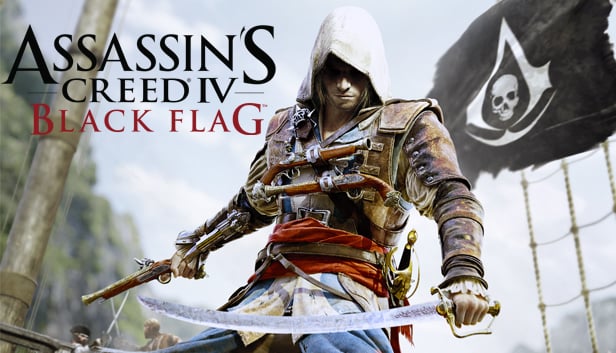Marketing campaigns take all shapes and sizes depending on the creativity of the team behind them. Sometimes campaigns go through unusual tactics, but none was as uncommon as Ubisoft’s approach. What was Ubisoft’s unique tactic for Assassin’s Creed: Black Flag?
Assassin’s Creed: Black Flag was the 6th installment of Ubisoft’s video game franchise. Ubisoft funded the exhumation, DNA testing, and facial reconstruction of a famous 18th-century pirate to promote the game.
Assassin’s Creed IV: Black Flag
Under the primary umbrella publisher of Ubisoft, Developer Ubisoft came up with the 6th major installment of its famous video game franchise, Assassin’s Creed IV: Black Flag. The game was initially released in 2013.
Black Flag is an action-adventure game whose historical timeline precedes Assassin’s Creed III. Black Flag’s main storyline is set in the 18th century Caribbean during the Golden Age of Piracy, with its main protagonist, a fictional Welsh pirate Edward Kenway. The storyline puts Kenway as the father of both protagonist Ratonhnhaké:ton and antagonist Haytham Kenway in the previous game.
This franchise installment focused on the ship-based exploration of an open-world map, unlike the previous games’ mostly third-person land-based exploration. The game’s setting focuses on Havana, Nassau, and Kingston, along with numerous islands, forts, and sunken ships.
Black Flag received positive reviews and was one of the best-selling games of 2013, with critics praising the open-world gameplay, many side-quests, excellent graphics, and naval combat. It also won the Spike VGX 2013 award for Best Action-Adventure Game. (Source: Ultimate Pop Culture)
Ubisoft Funds Excavation Team
During the inception of Black Flag, Ubisoft researchers came across a real-life pirate named Amaro Pargo. They were amazed at the colorful life and adventures of Pargo that they decided to hire an archaeological firm to investigate further. (
The archaeological team soon got to work on unearthing Amaro Pargo from the tombs under a church of Sto. Domingo in San Cristobal de La Laguna, in the Canary Islands. Upon opening the grave, the team discovered that Pargo’s remains were laid with his parents, bodyguard, eight other adults, and around ten children.
Dr. Angel Fuentes, head of the forensic laboratory at Madrid’s Autonomous University, was able to rebuild his skeleton, as well as his parents and his infamous bodyguard Cristóbal Linche.
Linche’s skeleton remains stood out as it was faithful to accounts that he was a large black man. His skeleton was more prominent than most, and his skull was more akin to black Africans than Pargo’s, who was akin to white Europeans.
These findings, along with numerous accounts of the known pirate, helped Ubisoft better understand the Golden Age of Piracy. Despite deciding not to include the pirate as a character, they were able to reconstruct and integrate their knowledge of Pargo’s adventures in the game. Source: Newsweek)
Who was Amaro Pargo?
Amaro Rodríguez Felipe, who took on the name Amaro Pargo, was born in San Cristóbal de La Laguna on May 3, 1678 or 1695. He was a 16th-century pirate turned corsair who, in historical accounts, showed strong potential as a seafarer in his earlier years.
Pargo was a successful merchant, slaver, and pirate, amassing many lands and treasures, most of which he donated to the church and especially to the poor. Pargo died on October 14, 1747, and is the only pirate buried on church ground. (Source: Model Ship World)
